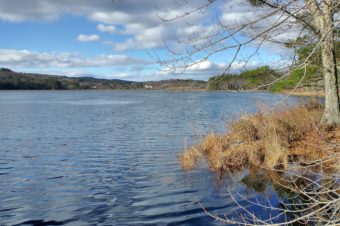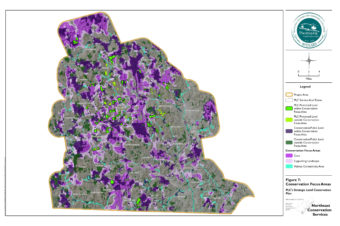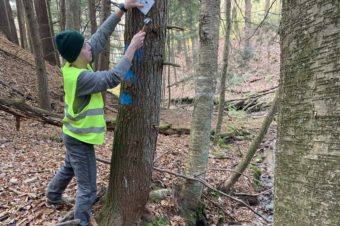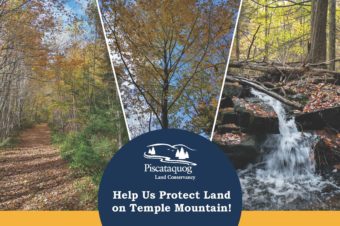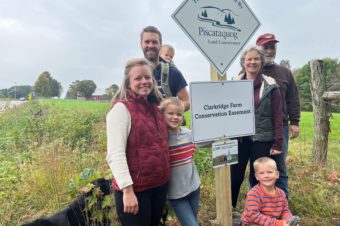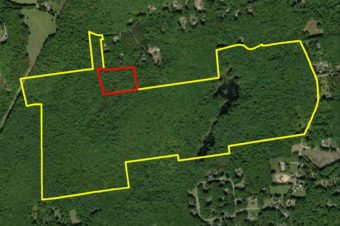
Story and Photos by Dave Butler
During the past two summers a dedicated group of volunteers made improvements to LoFlo, a meandering trail on the eastern part of Piscataquog Land Conservancy’s Florence Tarr Wildlife Sanctuary in Bedford.
One of these projects presented us with a choice: route past a couple of white ash trees or through a stand of mostly white pines. Knowing pines are able to grow in sandy, well-drained soil and hardwoods prefer rich soil, we chose the path through the white pine dominated area.
The experience reminded me of late 18th century settlers, looking to lay down roots in the uplands of southern New Hampshire. They also knew trees were an indicator of soil characteristics, and they used this knowledge in their search for quality land to grow crops. The hope was to find an area populated with tree species that grow in rich soil (like white ash or sugar maple), or at least one that was not predominantly white pine and hemlock.
The book “Stone by Stone” by Robert Thorson supplies added context to how tree populations helped site planning farms.
What trees told settlers about land:
- White ash and sugar maple = rich soil, land ideal for crops.
- Chestnut and oak = moderately productive soil good for pasture.
- Hemlock and red maple = wet areas not suitable for agriculture, but serviceable as woodlots
On a walk through the eastern portion of the Tarr Sanctuary today you’ll see few white ash, sugar maple or hardwood species like black cherry or yellow birch. The Tarr Sanctuary’s Forest Management Plan, a professional forester’s detailed analysis of the property, echoes these observations.
USDA soil maps are another helpful tool for analysis, as they supply details of soil composition. The Tarr Sanctuary soil map shows that the eastern part has deep, acidic, stony, fine sandy loam. Loam consists of three elements: sand, silt, and clay. “Sandy loam” may not be ideal, but if a combination of these three elements is present, the mineral components of the soil should supply the fertility and structure needed to grow crops.
These observations lead us to the question: Were the first settlers of what is now the Tarr Sanctuary able to establish fields for crops?
There are a couple ways to explore this.
- Find the town’s tax or census records. If you can associate a town resident’s name with the property in question, these annual records may include information such as #bushels of corn, #tons of hay, etc.
- Analyze stone walls and stone piles. In the book “Forest Forensics” by Tom Wessels he describes the presence of fist-sized stones meaning that the adjoining field was plowed annually. The stones that rose to the surface due to frost action were then moved out of the way (usually to the edge of the field).
Based on the large number of fist-sized stones found at Tarr Sanctuary, we don’t know exactly how successful the first settlers were, but we can deduce that the land was fertile enough to raise crops over many generations. Rich soil would have been nice to have for settlers, but well-draining, sandy loam was good enough.
Dave Butler is a member of the PLC Board of Trustees and Stewardship Committee.
